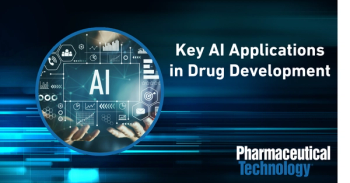
Pharmaceutical Technology Europe
- Pharmaceutical Technology Europe-05-01-2006
- Volume 18
- Issue 5
Why use LIMS and related software
A laboratory information management system (LIMS) can control, manage, organize and document information thus saving time and money.
What is LIMS and how can it help you?
A laboratory information management system (LIMS) can control, manage, organize and document information thus saving time and money. Locating certain types of production information or documentation can be easily fulfilled using software search functions. The ability to automate more procedures reduces the risk for human error and allows personnel to be used for other types of work providing a better cost benefit ratio. All these parameters should work together to reduce the time and cost of production.
Which environments can it be used in?
LIMS software systems started with small, closed, in-house solutions in the 1970s. In the 1980s, commercial products became available when software was installed on computers linked together in a closed network system. The software was usually specific to a certain instrument supplier and used a proprietary data format to protect the product and keep customers reliant on the brand. Technical improvements led to faster and more open client server systems becoming available in the 1990s. Modern systems are open client server web-based systems using Microsoft .Net technology.
Which type of LIMS to choose?
In general there are three options available to a company. It can decide to program an in-house, proprietary system fulfiling all local company demands. Alternatively it may buy a commercial product and modify it to fulfil local demands, a process known as customization. The last solution is to buy a standard program covering most of the needs of the project, known as a commercial off-the-shelf (COTS) solution. Parameters such as initial price, licence price, implementation time, updatability, staff training, design and ease of use, CFR 21 Part 11 compliance, audit trails, electronic signatures and validation should be taken in consideration before selecting a new LIMS software system.
What about software security and validation?
A lot of laboratories and production units are controlled be regulatory rules. Working with software with traceability options offers huge benefits when solving technical problems and complying with documentation demands. All pharmaceutical companies must adhere to the 21 CFR Part 11 regulation including electronic signatures and audit trails. Traceability is the key component of solving many technical challenges. The technical development of the computers, advanced modern software technology, standardized result formats, LIMS flexibility and performance has reached a level where it can offer most users large scale options to make life easier.
Which applications can it support?
LIMS software is traditionally found in analytical laboratories such as R&D labs, in-process testing labs and quality assurance (QA) labs. Technical developments and increasing demands in other industrial areas has seen LIMS placed in environmental labs, industrial labs, and pharmaceutical and life science labs. LIMS is designed to be linked to analytical equipment through an interface box. Depending on the size and type of the LIMS, the following procedures can be undertaken:
- A working table may be set up.
- Samples identified.
- Analytical parameters defined.
- Samples analysed.
- Results approved and electronically signed.
Manufacturing industries where individual components are used may need to track objects incorporated into many products reliably across the globe. Achieving this task without the aid of a LIMS type system would be extremely difficult.
Reducing the time-to-market is a priority in the pharma industry, with development costs rising rapidly. LIMS software can be used to optimize the instrumental analytical capacity for testing different samples using resources in the most efficient way. During the regular inspections, which form part of the industry's tight regulation, a searchable electronic database created by a LIMS system is invaluable.
How is data reliably and securely matched and extracted from the database?
With increasingly complex networks and multiple feeds to a central server, software is needed to collate and sort information. The central software is typically a relational database, for example an SQL database. If the information has varying formats a translation module must be programmed to standardize the data for ease of analysis.
The central software must have maximum security to comply with 21 CFR Part 11 including user name, password (including rotation rules), electronic signature and audit trail. It must not be possible to delete data using the Microsoft "explore" functionality, though data may be inactivated. If necessary it must be possible to "reactivate" the data to comply with regulatory requests. All risk-based actions must be documented in the audit trail and validated. Any critical parameter able to influence the final judgment of the data must be checked (validated). When combining and modifying data formats it is difficult to keep the audit trail and track all calibration data/off set values. If one of the programs is updated, it may be necessary to change or modify all linked programs with a following complete validation of all parameters.
With all data in the same database, statistics, calculations and baselines might be extracted. To create statistic reports the correct data must be present. The correct data is normally produced using the software search functionality. All statistic and search functions must be validated to ensure that all data are present and calculations are performed according to an accepted standard. Using different calculators may cause small differences in the calculated results. The differences are due to how many decimals are used and the rounding technique. Routine calculations may be programmed as macros. Some programs may create a baseline report meaning that the user can get a summary report at a certain time stamp showing the status of all parameters.4 Even if there are no external authorities demanding a validation or similar documentation it is strongly advisable to test any software doing the target task in the local environment.
Conclusion
Using a LIMS software system may increase efficiency if the needs of user are matched, the system is implemented in a proper way, validated according to local demands, properly configured to local structure and if incoming data arrives in the same format. The system must be continuously updated and a back-up procedure defined. Modern technology and software development has improved LIMS flexibility and performance to a level where it can offer most users large scale options to make life easier. Generally speaking, the LIMS system started as a "narrow" software solution supporting only few applications but today it is much more standardized and able to support a huge range of applications.
Christian Stage is director of QA product development at QAtor, Denmark.
Bibliography
1. R. Wagner, Pharm. Technol. Eur. 17(12), 54–57 (2005).
2. Title 21 Code of Federal Regulations Part 11 (21 CFR Part 11) U. S. Food and Drug Administration, 5600 Fishers Lane, Rockville MD 20857-0001
3. H. Gillespie, Scientific Computing & Automation, June (1994)
4. C. Stage, Pharm.Technol. Eur. 17(8),13–15 (2005).
5. Today's Chemist at Work, 1998, 7(2), 79–80, 82, 84. Copyright 1998 by the American Chemical Society.
6. C. Stage, Pharm. Technol. Eur. 18 (2) 16-18
Articles in this issue
over 19 years ago
Parallel trade and free movementover 19 years ago
The process analytical technology marketover 19 years ago
Creating a compelling business case for your LIMS implementationover 19 years ago
Integrating PAT with MESover 19 years ago
Using remote monitoring to boost performanceover 19 years ago
Trust in medicinesover 19 years ago
Marking and coding: the key to combating counterfeitingNewsletter
Get the essential updates shaping the future of pharma manufacturing and compliance—subscribe today to Pharmaceutical Technology and never miss a breakthrough.




